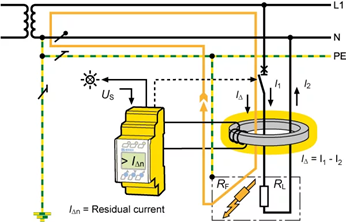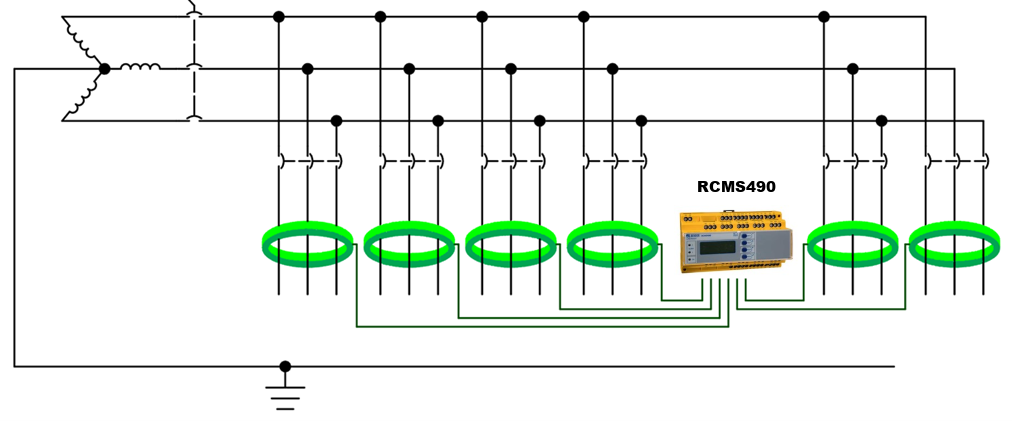Preventing Potential Hazards with Heat Trace Systems

Introduction
Heat tracing is a vital technology used to prevent freezing and maintain the flow of fluids in pipelines, vessels, and other industrial applications. While heat trace systems provide numerous benefits, they also present potential hazards, particularly regarding electrical safety. Ground faults can occur in these systems and, if left unaddressed, can lead to severe accidents, damage, and costly downtime. To mitigate these risks, ground fault equipment protection (GFEP) is essential for heat trace applications.
The Role of Heat Trace Systems
Heat trace systems are used in various industries, including oil and gas, chemical processing, food and beverage, and water treatment. They are used to prevent freezing, maintain process temperatures, and ensure the smooth operation of critical processes. These systems consist of heating cables or tapes installed along pipes, tanks, and other equipment to provide controlled and consistent heat.
Understanding Ground Faults in Heat Trace Applications
A ground fault is an unintentional electrical connection between an energized conductor and a grounded surface, such as a metal pipe or equipment enclosure. Ground faults can arise from insulation failure, damaged cables, improper installation, or environmental factors. Heat trace applications in North America are typically solidly grounded systems. An electrical system is said to be solidly grounded when the neutral line is directly connected to ground potential. This type of electrical system allows line-to-neutral current and makes ground faults relatively more straightforward to detect than ungrounded systems. Unfortunately, when a ground fault occurs in a solidly grounded system, it tends to be a very high current. Therefore the system must trip rapidly to prevent dangerous shock risk or fire.
Ground Fault Equipment Protection in Heat Trace Applications
Ground fault equipment protection is essential for heat trace applications for several reasons:
- Personnel Safety: GFEP helps protect workers and technicians from electrical hazards. In the event of a ground fault, the system quickly detects the fault and interrupts the current flow, minimizing the risk of electric shocks or electrocution.
- Asset Protection: Heat trace systems often protect valuable assets, such as pipelines, tanks, and equipment. A ground fault can cause significant damage to these assets if left undetected, leading to costly repairs and production downtime.
- Fire Prevention: High-ohmic ground faults can casing arcing and generate excessive heat, increasing the likelihood of electrical fires. By promptly detecting and interrupting ground faults, GFEP can prevent potential fire hazards, safeguarding and equipment.
Bender Products for Heat Trace Applications and Examples
Because heat trace systems are typically solidly grounded, the primary Bender products used to establish ground fault equipment protection are Residual Current Monitors (RCMs) and Current Transformers (CTs). Typically, Bender recommends either an RCMS460, RCM410, or RCM420 depending on the application. To detect ground faults with an RCM device, all conductors of the outgoing circuit to be monitored (except the ground conductor) are routed through a measuring CT. In a fault-free system, the sum of all currents equals zero so that no voltage is induced in the CT. If a fault current (IΔ) flows via ground (or other paths) the difference in current generates a voltage on the CT that is detected by the RCM. The output signal from an RCM can then be fed into a breaker or contactor to the circuit in the event of a ground fault.
Though many small heat trace applications can be protected with only a GFCI-breaker or similar device, a system utilizing an RCM, CT, and shunt-trip breaker/contactor allows more flexibility, such as compatibility with higher load currents and voltages. With Bender technology, users also receive EoL device failure notifications thanks to our devices conducting automatic self-testing to indicate if they are no longer functional.
The RCM example below can be connected to shunt-rip breakers or a contactor to enable tripping when a ground fault is detected or can be used for alarm purposes only in applications that are granted. An exception to this is under NEC 427.22 due to critical loads that cannot be safely shut down even in the case of a ground fault.

Electrical Codes and Standards
There are a wide variety of global standards regarding the different varieties of ground fault protection equipment. The most relevant standards related to heat trace applications in North America are:
- NEC 427.22 (Industrial) – GFEP
USA National Electric Code dictates that industrial applications must include GFEP for each branch circuit that supplies electric heat equipment such as heat trace circuits/devices. Exceptions can be made for particular installations where there are critical loads that cannot be safely shut down even in the case of a ground fault, but a ground fault indication or alarm is still required. Very similar requirements are in place in Canada according to CSA C22.1-21 Rule 62-116. - NEC 426.28 (de-icing + snow melt) - GFEP
USA National Electric Code dictates that de-icing and snow melt applications require GFEP. - IEEE 515 – Trip at 30mA
IEEE standards define the ground fault trip level for GFEP at 30mA.
Conclusion
In conclusion, ground fault equipment protection is a vital safety feature for heat trace applications. By promptly detecting and responding to ground faults, Bender technology can help protect the well-being of personnel, preserve the integrity of valuable assets, and prevent electrical fires.
For more information about this application or to learn more about Bender technology related to your specific application, contact our team of experts.
This article is for informational purposes only. Bender provides the information "as is" without warranty and is not responsible for its accuracy or reliability. No warranties are given regarding its suitability for any specific circumstances.




.jpg?width=352&name=Ships%20%26%20Vessels%20300x175%20copy%20copy%20(1).jpg)